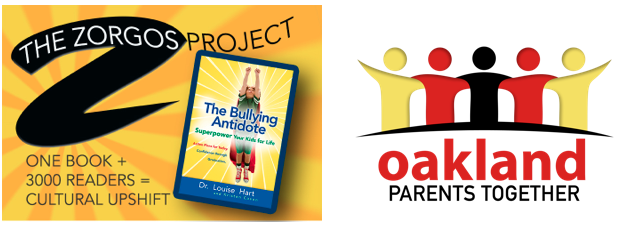Swept Away by Technology
In Chapter Two, “Enormous Changes in Society,” we looked at how technology has shaped our family systems over the past hundred years. This chapter focuses on how parents can navigate today’s tsunami of media in the best interest of their children.
“Technology enriches our lives, but it also impoverishes our lives. Humans crave connection, and technology connects people to the broader world—but it also allows them to isolate much more easily…. Technology also creates avenues for bullying that we could have never dreamed of even ten years ago.” (P. 322)
 Q: How has bullying changed since you were a child? How is your social life different from that of your parents?
Q: How has bullying changed since you were a child? How is your social life different from that of your parents?
“Everything kids experience in the first six years of their lives is downloaded into the brain. TV programs and commercials can fill children’s ready-and-eager-to-learn brains with the wrong stuff, especially if they watch shows inappropriate for their age level. As a consequence, children are showing up in kindergarten with greater disrespect, incivility, and violence than before. Technological and commercial pressures are hampering healthy development, obstructing the learning of important life skills, and changing the architecture of the brain.” (p. 334)
Q: In your opinion, how are youngsters in general different from when you were young?
“Years ago, kids came home from school, and then went outside to play until their parents called them in for dinner. These days, grandparents give iPads to their six-year-old grandkids and parents readily buy digital toys for children. These cool, captivating, engaging toys, given with the best of intentions, can hijack and derail a child’s healthy development.” (p. 332)
Q: What real-life experiences are today’s kids missing out on because of their fascination with and addiction to screens?
“Video game developers create what is called a ‘compulsion loop’. The player plays the game, achieves the goal, and is rewarded with new content, which makes the player want to continue playing and re-enter the loop to explore the new content. During this process, the pleasure center of the brain is activated, releasing dopamine. It feels good—it’s fun! (p. 333) “A study suggests that more than 5 million American kids ages eight to eighteen meet the definition of video game addiction. All children are susceptible, but especially those with poor self-restraint and poor impulse control.” (p. 333)
Q: Review the bullet list of those most susceptible. Which especially speak to you?
“Parents feel overwhelmed and helpless. They feel out of control of their lives and their families. The British study shows how popular culture is sabotaging harmony and unity, and creating division. The media has hypnotized children, molding their brains toward materialistic values and raising good ‘consumers’ instead of good citizens.” (p. 330)
Q: Amy Jussel, an expert on how advertising shapes kid’s brains, doesn’t mince words: “It’s nothing short of corporate pedophilia and voyeuristic sleaze fouling up kids’ socio-emotional health, and our cultural compass as a whole.” Do you agree? Are you worried? Or do you see it differently?
“While parents busily try to set limits at home, marketing executives work day and night to undermine their efforts with irresistible messages.” (Dr. Susan Linn, p. 327)
Q: How do you cope with the “Bullies Behind the Screen” as described on pages 328-330?
“Our kids are out of shape, tuned out and stressed out, because they’re missing something essential to their health and development: connection to the natural world.” (The National Wildlife Federation, p. 336) “Playing outdoors gives children a safe and captivating outlet for pent-up stress, agitation, and aggressive energy. Creative, unstructured free play is a remedy for overscheduled, over-programmed, stressful lives. Exercise and exploration in nature is an antidote to negative influences, and can have enormous benefits—including plain old-fashioned fun.” (p. 336)
Q: How are some ways you promote positive nurturing in our high tech/low touch culture?
“Kids who are not developmentally ready for what the mainstream media has to offer are the ones who are most at risk. It is therefore the parent’s job to decide how much a child can watch or play.” (p. 338)
Q: How old are your children? What strategies on pages 339-342 do you use to manage technology? What new strategies from this list will you try?
This question is always a good one:
Q: What sentence, paragraph, or idea popped out at you, or stuck with you after reading?
Reply in the Comments, below!
Looking for resource links? Click here.
<< Chapter 17 | Chapter 19 >>




 “When students are taught about human rights in schools, they tend to treat one another and themselves better.” (p. 348)
“When students are taught about human rights in schools, they tend to treat one another and themselves better.” (p. 348)
